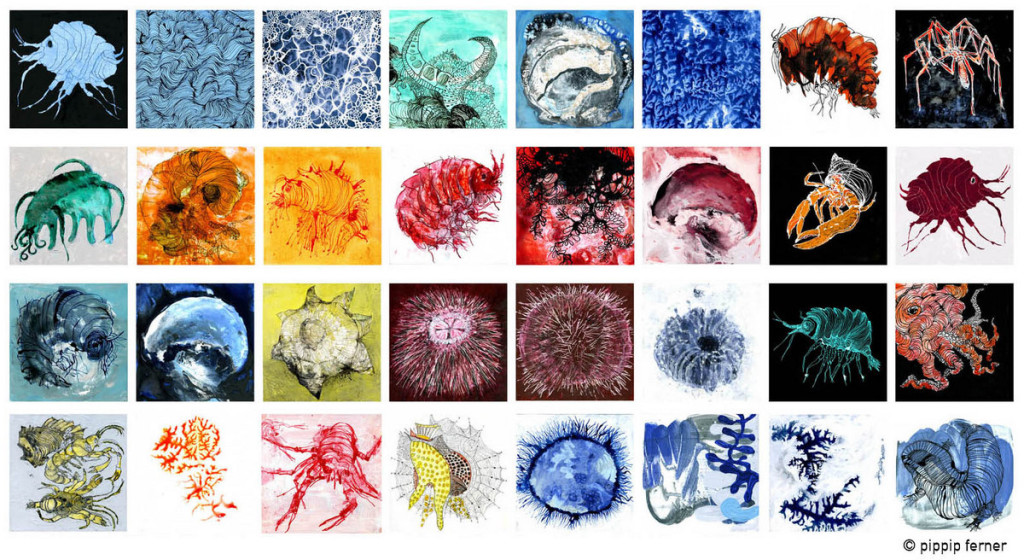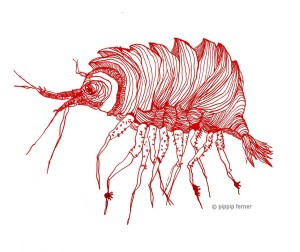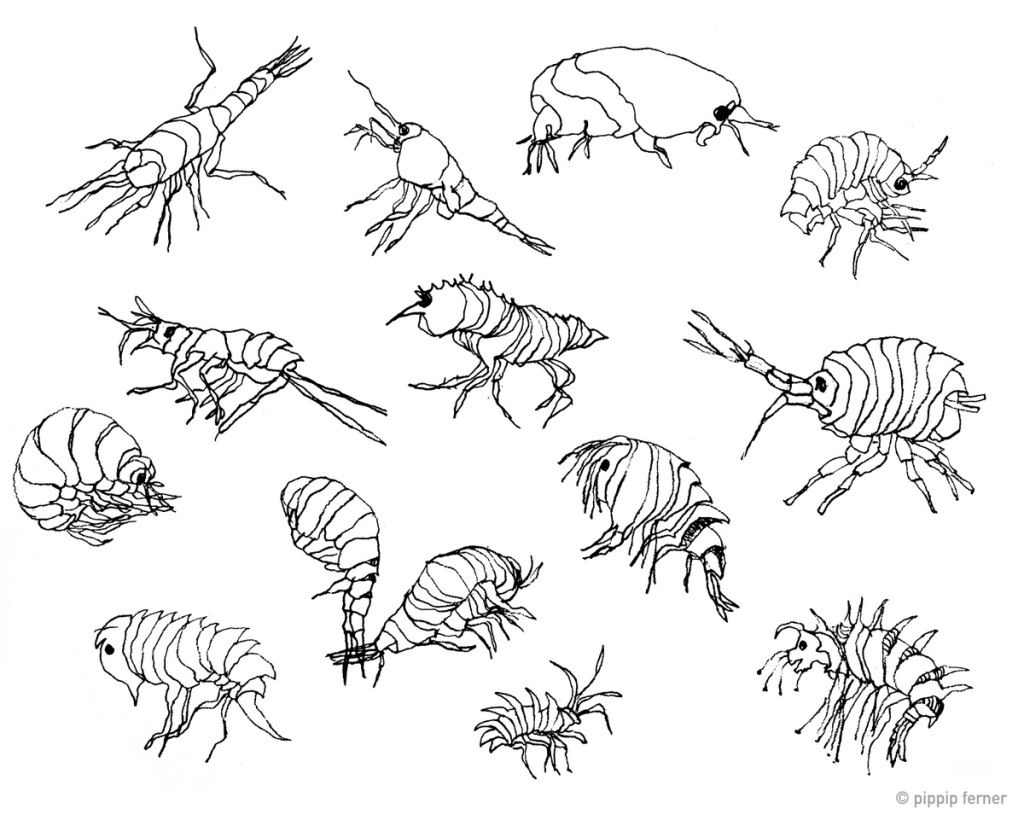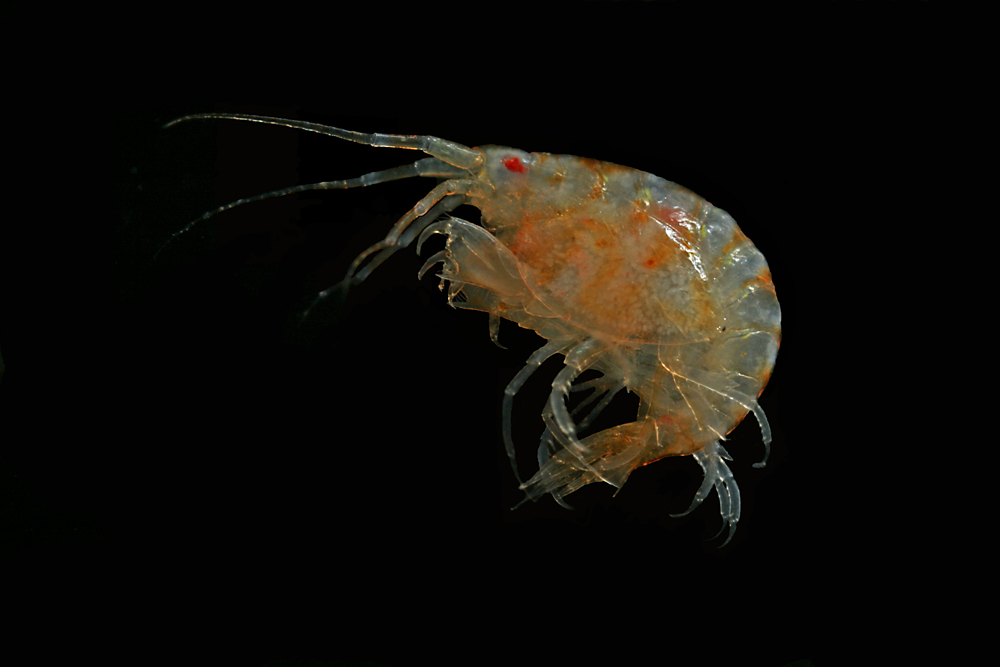What does an organism really look like – and how does that organism make us feel, what thought does it inspire, and what beauty is hidden within their complex structures?

Some of Pippip Ferner ́s studies from the cruise onboard G.O. Sars. (Small paintings 20x20cm in acrylic paint, ink and pencil) © Pippip Ferner
Anne Helene and Pippip look at the same organsims, but from different perspectives. Anne Helene works as a scientist at the Invertebrate Collections and Pippip Ferner is an artist who is very inspired by marine biology and marine organisms in her work.
As biologists we have the privilege to see many of the wonders of nature up close as part of our job. But how can we share that with the rest of you – all of us who didn´t go to that cruise, or don´t study that exact organism?
Historically, artists used to be part of most large projects – as documentarists. This tradition still stands, but now it is often the scientists that make drawings of what we see, and often more importantly: what details are the important ones for the scientific studies. Where does the pure artistic (non-documentary) work fit now?
Pippip´s long interest in marine biology has lead to her participation on a scientific cruise with MAREANO, where she met Anne Helene. Being on a cruise and observing animals live, talking with the scientists and see (part of?) what they see lead to a series of sketches that resulted in many paintings, sculptures and prints.
She wants to look at the marine biology from a non-scientific view point, to look at details or whole organisms and see new shapes and explore textures. Where the scientist has to stick to the strict morphology of the organism, Pippip can look at what is not seen.
Here are some of Pippips examinations of amphipods – and some photos and scientific drawings of some amphipods that might have been inspiring her. In Pippips own words, she aims to “ contrast beauty against ugliness, weak against strong, small againt large.” This might make it both easy and difficult to recognise her objects, and her pictures might be both simple and complex at the same time.
Much of our scientific work is to observe minute details in our chosen organisms. Looking at amphipods scientifically means looking for serrations along curved ridges, counting small hairs (seta) and seeing if they have split ends, looking at shapes of mouthparts and lengths of feet and antennae, and documenting this with photos and drawings.
Having the luck and joy of seeing these same organisms represented artistically can give an added dimension to our work. It also gives the possibility for all the rest of you to get another gate to come in contact with our organisms through.
Maybe taking both views into account will help us learn and understand even more? The scientific and artistic views can supplement each other, and have been doing so already for generations.
The collaboration between Pippip and Anne Helene continues – yesterday Pippip visited the Invertebrate Lab, to get new ideas and inspirations for further artistic examinations… We are sure more beautiful, inspiring and maybe provoking representations of marine life will continue to come from this collaboration. Be sure to follow us!
– Anne Helene and Pippip





